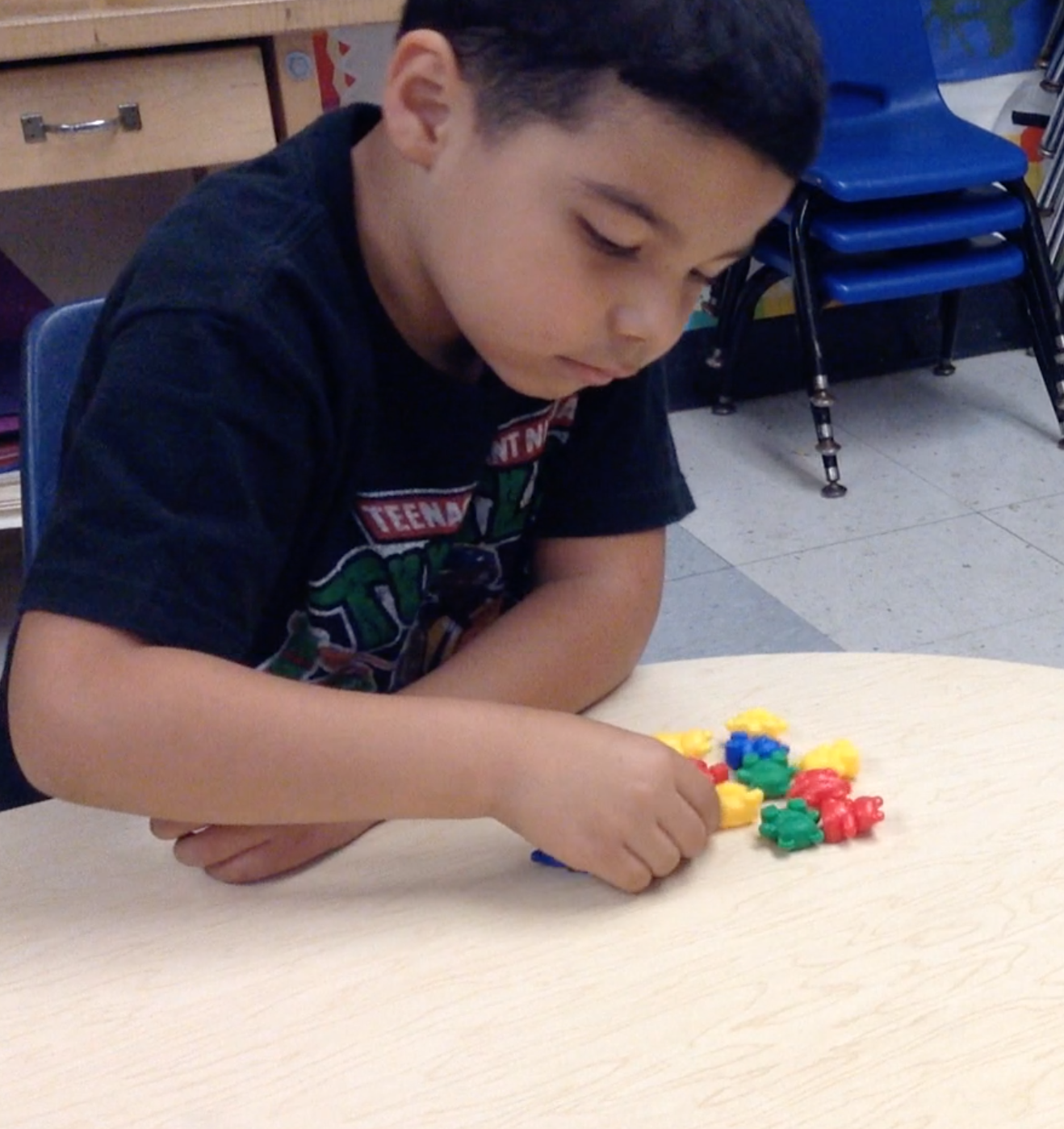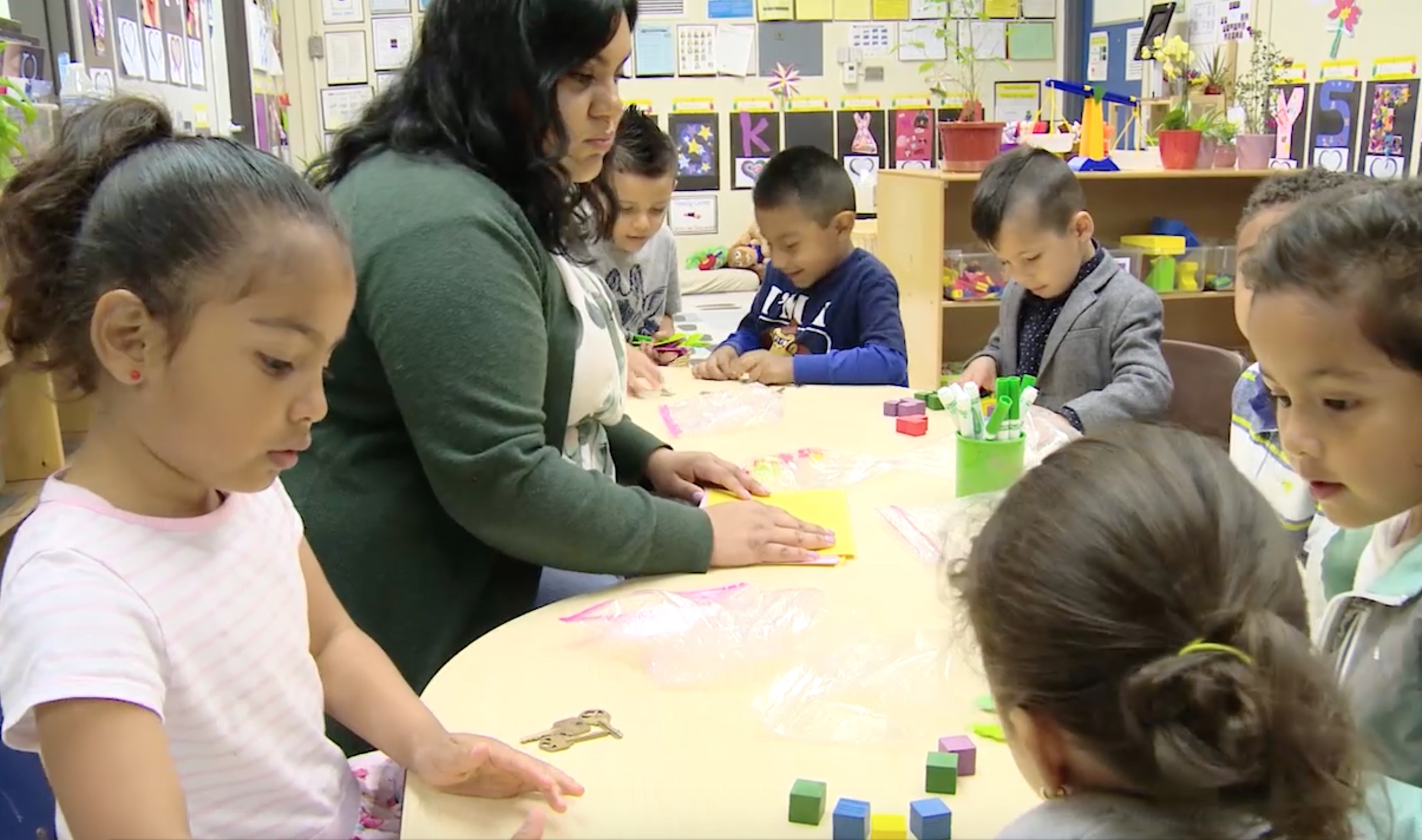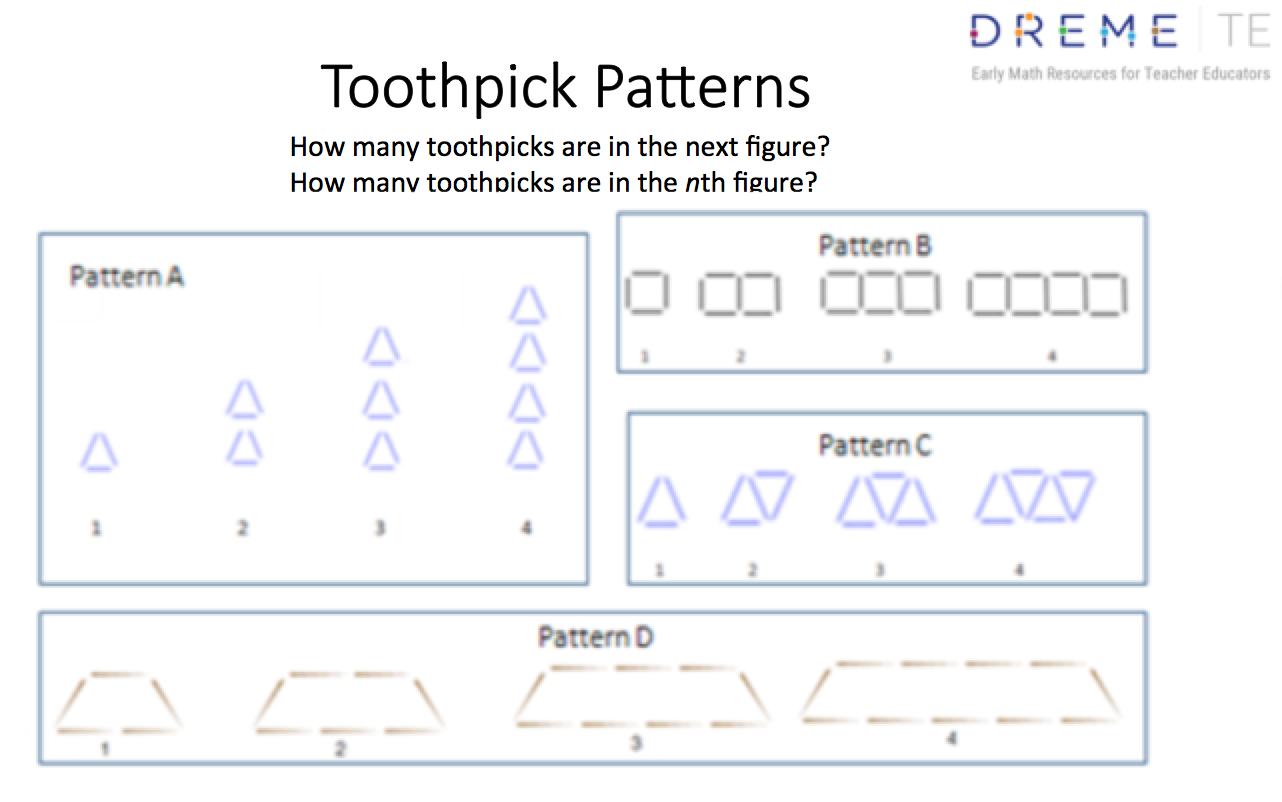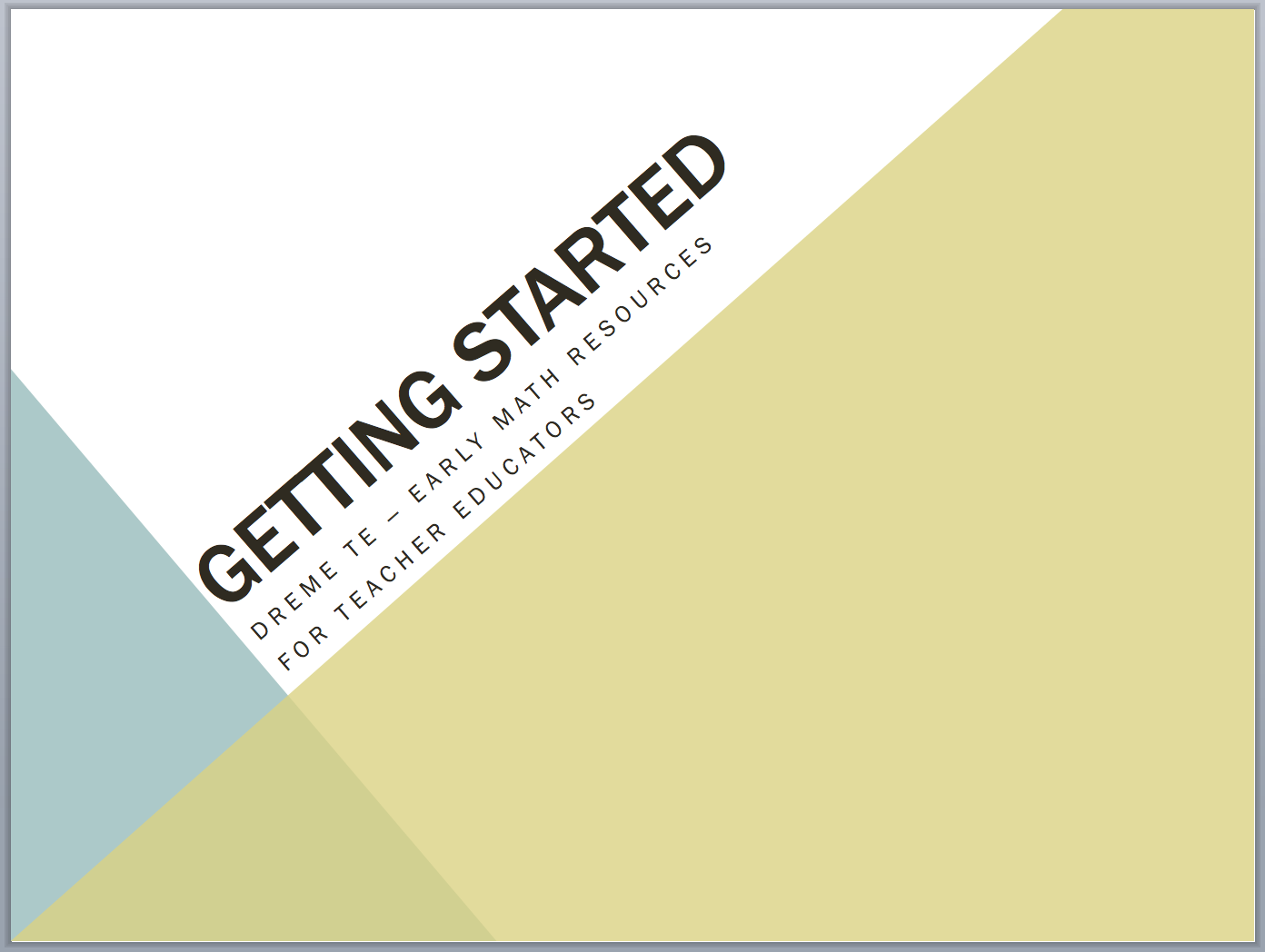This handout explores building on how young children count collections of objects to support them to reason about solving problems that involve operations.
by Megan Franke
Counting collections (see Counting Collections Overview for more information about this activity) is the perfect start to problem solving. When children count collections they naturally begin to reason in ways that support them to add, subtract, multiply and divide. Yes, young children can multiply and divide! When young children begin to reason about solving problems involving the operations, they start by reasoning about the action. They think about joining, separating, comparing, and grouping.
Jayden: Separating Bears
 Consider what happens when we ask Jayden to count a collection of 14 colored bears. Jayden counts his collection, saying one number word with each bear he moves across the table. When he is finished, we ask how many bears are in his collection, and he proudly responds, “Fourteen!” We then ask Jayden: “What would happen if two of the bears walked away to go and find some food?”
Consider what happens when we ask Jayden to count a collection of 14 colored bears. Jayden counts his collection, saying one number word with each bear he moves across the table. When he is finished, we ask how many bears are in his collection, and he proudly responds, “Fourteen!” We then ask Jayden: “What would happen if two of the bears walked away to go and find some food?”
How might Jayden respond? How could we interpret these responses?
Jayden might say, “No! because then I won’t have enough.” Here Jayden knows that taking away makes fewer. He does not need to tell you how many are left to show that he is working on subtracting, because knowing that there are fewer when you take away is a beginning understanding.
Jayden might not know what you mean when you say that two walked away. He may need support in making the action more explicit for him. He may need you to say, “Can you put two in my hand?” He may or may not be able to put two in your hand because counting a group of two is not the same as giving you two (in the second case, you need to create the set of two). You could continue to ask these kinds of questions as Jayden works on making sense of what happens when you separate items from your collection.
Jayden might move two bears away from his pile. Here he shows you that he sees how to change the initial group with a gesture and without words. Or he might count the bears that are left and tell you that he only has 12 bears left. In both of these cases Jayden shows knowledge of subtracting. In both cases Jayden is using his counted collection to help him reason about subtracting. In both cases Jayden is thinking about the bears leaving and the action of separating. In the second case, Jayden carries out the separating action and counts the number of bears left, thereby completing the separating problem to tell how many are left. The next step for Jayden, after much experience being asked questions about his collection, is to ask him to solve a problem without having counted the collection. “Jayden, let's say you had fourteen animal cookies and then you ate two of them. How many would you have left?”
You will see many questions and responses like this from young children. The intent here is to use what the child already knows about counting a collection to ask questions that stimulate thinking about the operations.
Annette: Comparing Dinosaurs
Consider Annette, who is counting a collection of 16 colored dinosaurs. She counts and gets 17. When the teacher asks her to count again nice and loudly so that he can hear her numbers, Annette does so and gets 16. When she counted the second time she sorted her dinosaurs by color making four piles: red, green, orange, blue.
Annette: Six, I have sixteen but I have six blue ones.
Teacher: Okay, six blue ones and sixteen dinosaurs. How many red dinosaurs do you have?
Annette: [counts the red ones] One, two, three. There’s three.
Teacher: Do you have more red dinosaurs or more blue dinosaurs?
Annette: [quickly responds] More blue ones.
Teacher: How do you know?
Annette: This pile is bigger.
The teacher could continue to ask follow-up questions, such as “How do you know the pile is bigger?” or even “How many more blue ones are there than red ones?” The goal here is to help Annette to begin to reason about comparison problems using what she knows about counting her collection. Notice how the teacher used what he observed as Annette counted her collection, specifically that she sorted by color and that she immediately wanted to count the six blue dinosaurs. The teacher thought about what Annette did, and asked a question that used this information. Similar to what we explored with Jayden above, there are a number of ways Annette could have responded to the teacher that would provide insight into her understanding of comparing quantities. How else might Annette have responded?
Engaging Young Children in Operations
It’s productive to engage young children in a variety of operations; we do not need to stop at separating and comparison situations. Young children can answer questions about their collections that involve the joining action, such as, “What would happen if we put your blue ones and red ones together?” or “What if I gave you three more dinosaurs?” They can also answer questions about grouping, like “What would happen if you shared your dinosaurs with me so that we each got the same number of dinosaurs?” One thing to remember is that these questions can be asked even if the child does not count the collection correctly—children who are developing their understanding of the counting principles can still reason about separating, joining, comparing, and grouping. Allow yourself to be surprised at how young children manipulate their collections as you pose a variety of questions for them. And notice the opportunities for continued work on the counting principles as children operate on their collections.
Ask questions after the children have counted their collections; let their work on counting the collection support them to think more; let them reason without interruption; accept their answer as a way to see what they understand. The experience of counting the collection and answering questions will help young children expand their understanding of operations.
Visit this page for videos of preschool teacher Ms. Gaxiola engaging with young children to support counting to problem solving.



